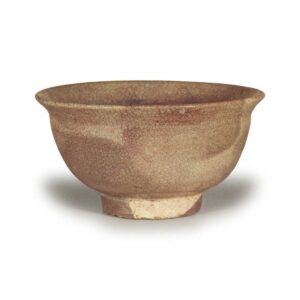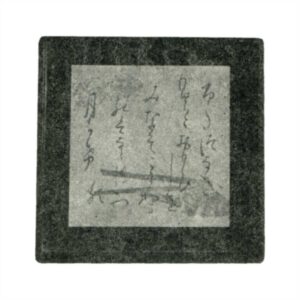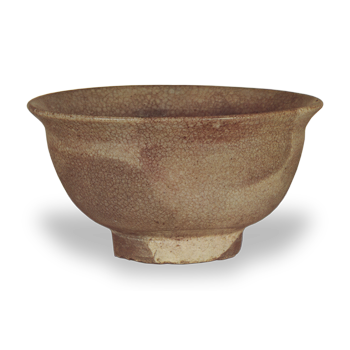



Accessories: Box, paulownia wood, lacquered with gold powder lettering, by Shimamaru Mitsuhiro; lid with same lettering; colored paper with inscription by the same artist.
Provenance: Mitsui family.
Dimensions:
Height: 7.1–7.4 cm; foot diameter: 5.9 cm; mouth diameter: 13.6–14.0 cm; same height: 1.4 cm; weight: 290 g.
Although the edges of the rim are somewhat sharply curved, this small tea bowl is well-proportioned overall and exudes a quiet, reserved charm. The soba-colored glaze is adorned with faint brushstrokes resembling splashes of color, evoking the appearance of moonlit cumulus clouds, hence the name “Tsukikage” (Moon Shadow). Korean ceramics from the late Goryeo period to the early Joseon period were essentially folkware, with little attention paid to material selection, shaping, or firing. As a result, the finished pieces are somewhat fragile, and cracks often form on the surface, creating a mottled appearance. However, Japanese tea masters came to appreciate this natural beauty.
There are various conventions associated with Kumagawa tea bowls, one of which is the “mirror” in the interior. This is created by carving out a circular area in the center of the interior. While this is merely a quirk in the shaping process, it is a hallmark of Kumagawa, and a smaller version is preferred. In this regard, this tea bowl can be considered ideal.
Box: Paulownia wood, lacquered with gold powder characters, painted by Torimaru Mitsuhiro
Box lid back. Color paper inscription by Umamaru Mitsuhiro
What I thought was without a pair,
All are there, like the mountains and rivers.



